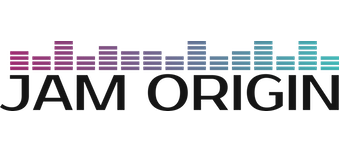Paul! This is some amazing stuff! I’m also following your facebook page. So Roxsyn is using different tech from SY300, but to me, many of the sounds seem very similar, although SY300 seems to have a more synth-ish sound (I don’t own one). I just thought it was better patches. I don’t understand the tech being used here but is it safe to say that you can get similar sounds from the different technologies? What might I listen for that differentiates the 2 technologies?
What tech is EXH using in pedals like HOG2 https://www.ehx.com/products/hog2 and any of the keys/organ pedals https://www.ehx.com/products/b9 ? The HOG2 seems something like what the Deep Expressor is doing, no? HOG2 has alot more stuff going on (only speaking about the guitar audio, not about guitar to midi) but is it similar tech? Could DeepFX ever be developed to the point of offering HOG2 flexibilities? Again, not knowing the tech used, so I ask.
I understand wanting to see if there is a demand for a very specific module, but some times you have to be like Steve Jobs, and just build it, and they will come. He never asked the consumer if they would like something between an iphone and a MacBook, he just built a flexible tool and let everyone figure out how to use it. I for one, never thought I would want an iPad although I’ve been using Mac since the Performa days. But, I bought one and use it all the time.
Of course, JO doesn’t have Steve Job’s capital, who does? So, as any good marketer knows it’s all about educating the consumer. I for one never thought twice about the DeepFX because of little promotion, very little hype, especially by consumers, on youtube for example. It’s all about playing a synthesizer, hearing those synth sounds with little talk about the guitar side or the benefits it offers.
Guitar pitch to midi is not a perfected technology but making the most out of the direct guitar signal is a way to get it almost perfect. The application should be considered, especially in live playing where playing a synth pad and guitar chording or octaves etc… can be a game-changer. But sometimes you need the guitar signal to enhance the synth tone or eliminate any latency, that’s when having a more synth-like sound works better than a normal guitar tone. And that’s what I’d love to see more in DeepFX. Also, more videos showing how amazing that side really is. I like that some factory patches are only guitar, but again, it’s educating the consumer.
Thank you for the in-depth explanation about the Deep Expressor module. Very interesting stuff. Everyone should read this to get the full potential out of it.
How do you incorporate your lab sounds to MG2? I think you have to! It’s too good to just sit in your lab! LOL If the guitar side could be developed to the point of being like a really good pedal AND is really promoted, you could add an easy 20% more sales, and charge a bit more too.
Anyway, I have Fishman TP and the hardware works great, but if you don’t have a good amp sim with effects for the guitar side you are limited. To me, this is where (besides price and no extra PU needed) makes MG2 a very exciting and unique option.
Thanks Paul.

